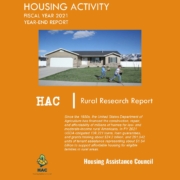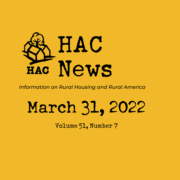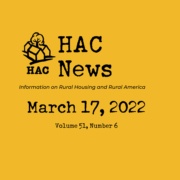Vol. 51, No. 9
TOP STORIES
Rural Partners Network launched.
A new “whole-of-government” effort led by USDA, the Rural Partners Network is intended to help rural communities access government resources and funding to create jobs, build infrastructure, and support long-term economic stability. USDA staffer Lee Jones has been named RPN’s executive director. Field staff will be placed in rural communities, starting with selected places in Georgia, Kentucky, Mississippi, and New Mexico, as well as certain tribes in Arizona. Additional efforts in Nevada, North Carolina, Puerto Rico, West Virginia, Wisconsin, and tribal communities in Alaska are planned to launch by the end of August and USDA hopes to expand eventually into all states, as well as more tribes and territories. For more information, contact RPN staff.
CFPB reports on rural banking access.
The Consumer Financial Protection Bureau, which recently announced a new initiative on rural financial issues, has published Data Spotlight: Challenges in Rural Banking Access. CFPB found that rural Americans rely on physical bank branches and smaller banks, though many lack access to physical branches; rural Americans are less likely to have a credit history and more likely to use non-bank credit, resulting in rural consumers paying more for credit; and medical debt affects rural access to credit, housing, and employment.
HAC lists its appropriations priorities.
As the FY 2023 appropriations process gets underway, HAC is supporting a variety of rural and tribal housing funding priorities for capacity building, rural rental preservation, and rural and tribal homeownership.
RuralSTAT
Small family farms operated 48% of U.S. farmland in 2020, down from 52% in 2011. They accounted for only 20% of production by value in 2020, while large-scale family farms (those with $1 million or more in gross cash farm income) yielded 46% of the total value of production. Source: USDA Economic Research Service.
OPPORTUNITIES
New round of farmworker housing funding announced.
On May 16 USDA will open its third application round for off-farm new construction funding from the Section 514/516 loan and grant programs. USDA will hold a webinar on May 11 to discuss the application process and the program. Preapplications will be due July 15. For more information, contact Abby Boggs, USDA, 615-490-1371.
HAC offers rental preservation financing.
USDA recently issued a Notice of Solicitation of Applications regarding its “no cost debt deferral” through the Multifamily Preservation and Revitalization program for Section 515 and 514 properties that have an obligation date after 10/1/1991. USDA will defer loan payments for 20 years to free up property funds for rehabilitation and improvements. Lower debt service payments will allow properties to leverage new financing or accumulate additional reserves for larger improvements. HAC has flexible, low-cost financing available for properties seeking debt deferrals through this program. Please reach out to Kristin Blum or Alison Duncan if you need financing for your Section 515 or 514 property or have questions on preservation of these properties.
Webinars to cover subdivision development for affordable housing.
Subdivision development is a complex undertaking that requires both a vision of what is possible and an eye for detail throughout the entire process. HAC offers a three-part webinar series, covering the process from start to finish, the financial risks and rewards for rural housing organizations, and more. The webinars are free and recordings will be posted online. Session 1: An Overview was held April 27. Session 2: From Project Inception Through Land Acquisition is scheduled for May 11. Session 3: From Land Acquisition to Completion will be on May 25.
Rural placemaking conference announced.
USDA and the University of Kentucky will hold a Placemaking in Small & Rural Communities Online Conference on May 23-24. Presenters will address rural placemaking strategies and provide placemaking resources, including a new interactive digital toolkit.
“Rural Talks” hybrid sessions planned.
Rural LISC will present webinars, with limited in-person attendance available in Washington, DC, on three rural community development topics: Broadband and Infrastructure on May 10-11, Housing on July 13-15, and Workforce and Small Business on December 7-9.
REGULATIONS AND FEDERAL AGENCIES
New USDA appointees have rural housing experience.
Tom Carew, formerly with Fahe and Frontier Housing, has been appointed USDA Rural Development State Director in Kentucky. Michele Weaver, whose background includes work with the Rural Community Assistance Corporation, was named RD State Director in Utah. HAC has posted a list of all USDA RD State Directors appointed by President Biden to date. These positions do not require Senate confirmation.
VA mortgage program for Native Americans needs improvements, study says.
The Department of Veterans Affairs’ Native American Direct Loan program has made relatively few loans, reports the Government Accountability Office in Native American Veterans: Improvements to VA Management Could Help Increase Mortgage Loan Program Participation. In addition to steps VA has already taken to strengthen the program, GAO recommends better data collection and performance measurement, planning, and working with other VA offices, federal agencies, and local organizations with applicable experience.
Duty to Serve plans accepted.
After twice requesting revisions, the Federal Housing Finance Agency has accepted the plans submitted by Fannie Mae and Freddie Mac for meeting their 2022-2024 Duty to Serve obligations. FHFA will review actions taken under the plans to ensure they address the needs of the three DTS underserved markets (manufactured housing, affordable housing preservation, and rural housing).
HUD to review barriers for people involved with criminal justice system.
As part of a broader federal effort to expand opportunities for formerly incarcerated persons, HUD Secretary Marcia Fudge has directed program offices to identify and propose changes to regulations, guidance documents, and other policies that may pose barriers to housing for persons with criminal histories. HUD also established a web page with information on preventing homelessness among people leaving prisons and jails.
Guidance addresses fair housing in rental properties’ marketing and applications.
HUD’s Office of Fair Housing and Equal Opportunity released new guidance on how some marketing, rental application processing, and waitlist management practices can perpetuate segregation or otherwise discriminate, violating fair housing requirements for HUD-subsidized multifamily housing. The guidance is intended to help property owners understand and implement more inclusive practices.
Equity Commission to meet.
USDA’s Equity Commission and its Subcommittee for Agriculture will meet on May 10 and 11. The meetings are open to the public online. For more information, contact Cecilia Hernandez, USDA, 202-913-5907.
Income limits revised.
The annual limits, which determine eligibility for several HUD programs, are effective April 18.
USDA explains which guaranteed loans can use oneRD provisions.
USDA Rural Development has confirmed its regulations for the oneRD Guarantee Loan Program are final as published in December. OneRD provides a standard set of requirements, processes and forms for lenders using the Community Facilities, Water and Waste Disposal, Business and Industry, and Rural Energy for America loan guarantee programs. Some provisions can be used for applications pending review, conditional commitments, and loans made under OneRD since October 1, 2020. For more information, contact Lauren Cusick, USDA, 202-720-1414.
Review notes flaws in USDA decision to move agencies.
A new Government Accountability Office report, Evidence-Based Policy Making: USDA’s Decision to Relocate Research Agencies to Kansas City Was Not Fully Consistent with an Evidence-Based Approach, considers USDA’s 2019 decision to move most Economic Research Service and National Institute of Food and Agriculture jobs from Washington, DC to Kansas City. GAO concludes that “USDA overlooked key evidence, e.g., it didn’t factor in potential costs related to the attrition of staff or the disruption of agencies’ activities due to the relocation. As a result, USDA cannot be sure it made the best choice to meet its objectives.” USDA confirmed last year that it will not disrupt the agencies again by moving them back to Washington, DC.
PUBLICATIONS AND MEDIA
U.S. needs 7 million more homes for lowest-income renters.
The National Low Income Housing Coalition’s annual publication, The Gap: A Shortage of Affordable Homes, reports there are shortages in every state. Nationwide, only 36 affordable and available rental homes exist for every 100 extremely low-income renter households (those with incomes below poverty or below 30% of their area median income, whichever is greater). The report concludes that both short- and long-term policy interventions are needed to address the immediate housing impacts of the pandemic and the underlying shortage of affordable housing.
Survey shows risky home financing used by millions.
Briefs from the Pew Charitable Trusts review existing research and report the results of a Pew survey to explore U.S. homebuyers’ use of nonstandard financing such as land contracts, seller-financed mortgages, lease-purchase agreements, and personal property loans. Usage varies by race/ethnicity: 34% of Hispanic borrowers have used alternative financing at some point, as have 23% of non-Hispanic Black borrowers and 19% of non-Hispanic white borrowers. Pew’s analysis notes some of the factors that lead residents of high-poverty rural areas to use alternative financing, including low incomes, the difficulty of mortgaging trust land, the lack of standard mortgage options for low purchase prices, and manufactured homes’ legal status in some places as personal property.
HAC
Need capital for your affordable housing project?
HAC’s loan fund provides low interest rate loans to support single- and multifamily affordable housing projects for low-income rural residents throughout the U.S. and territories. Capital is available for all types of affordable and mixed-income housing projects, including preservation, new development, farmworker, senior and veteran housing. HAC loan funds can be used for pre-development, site acquisition, site development, construction/rehabilitation and permanent financing. Contact HAC’s loan fund staff at hacloanfund@ruralhome.org, 202-842-8600.
Please note: HAC is not able to offer loans to individuals or families. Borrowers must be nonprofit or for-profit organizations or government entities (including tribes).

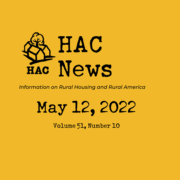
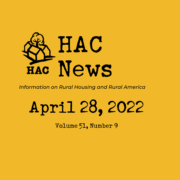
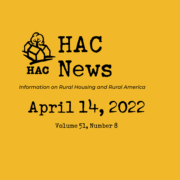
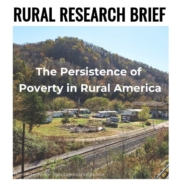 Housing Assistance Council
Housing Assistance Council